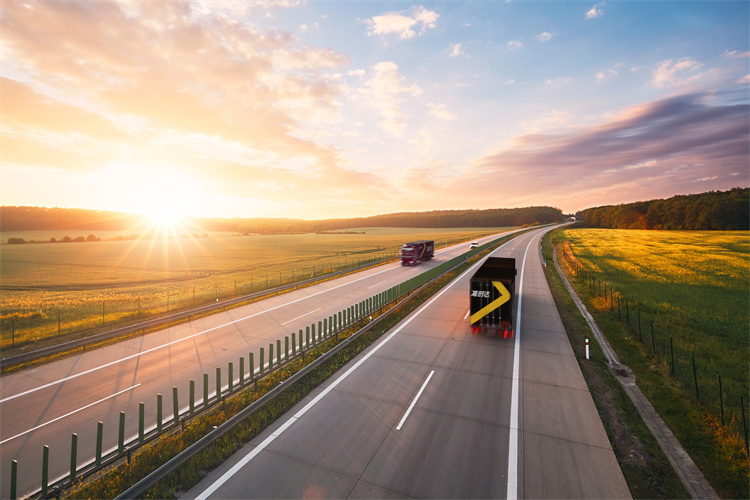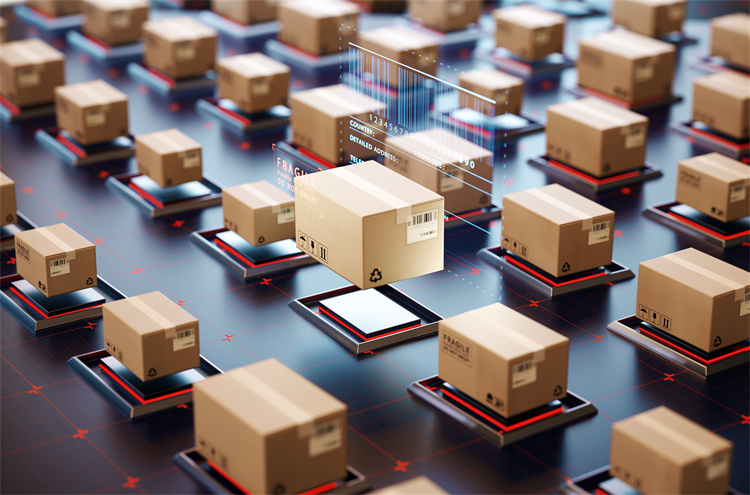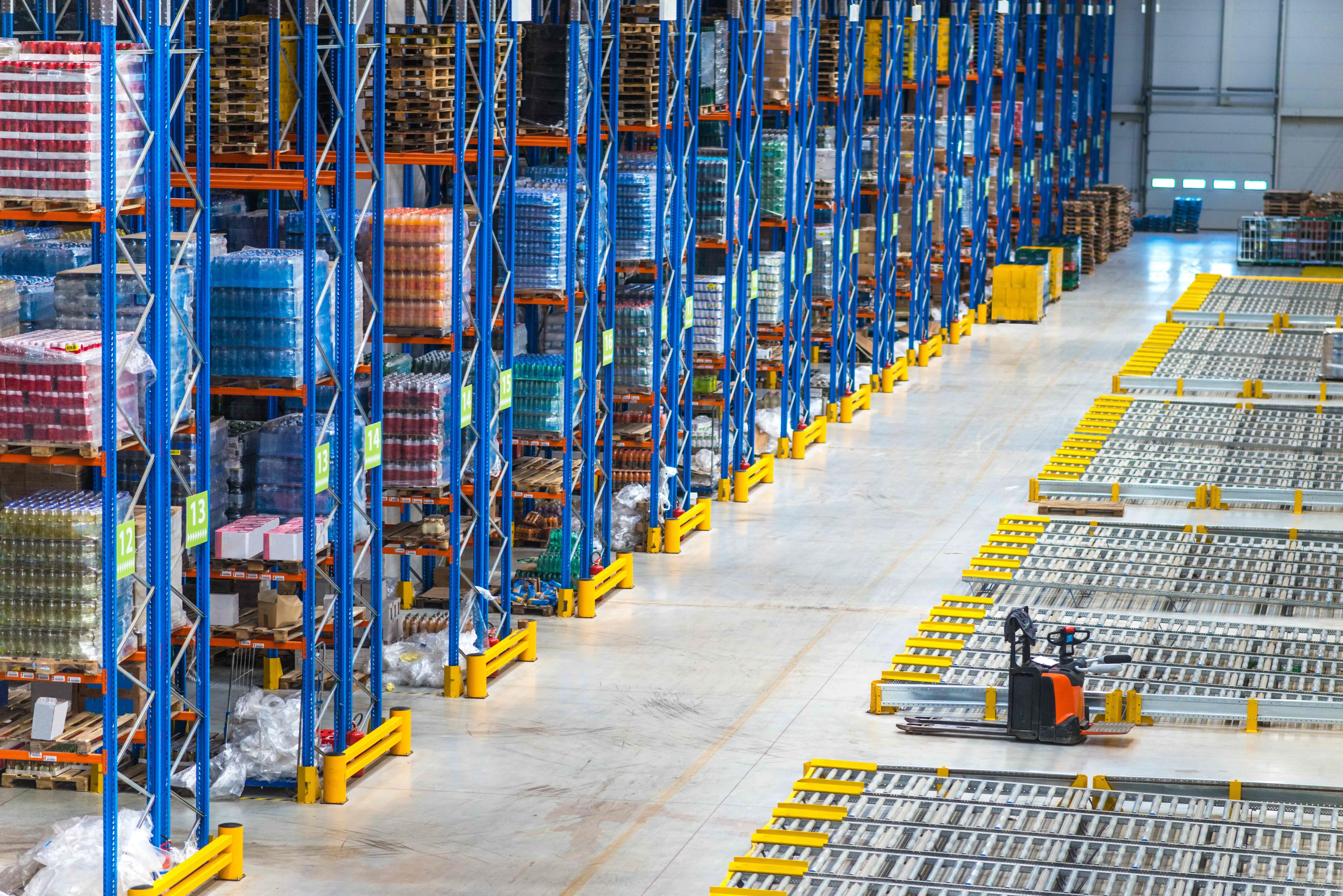Key Trends Shaping Same-City Express Delivery in 2025

The demand for same-city express delivery continues to surge in 2025, driven by the rapid growth of e-commerce. The market is expected to expand from $324.79 billion in 2024 to $351.43 billion in 2025, reflecting a CAGR of 8.2%. You must adapt to emerging trends like real-time visibility and dynamic routing to stay competitive. Technological innovation in delivery processes ensures faster, more efficient operations while enhancing customer satisfaction. Businesses that embrace these advancements can optimize resources and meet next-day delivery expectations.
Key Takeaways
Use local delivery networks to make last-mile delivery faster. Small hubs nearby can save time and cut costs.
Switch to electric vehicles and eco-friendly tools for greener delivery. This helps the planet and keeps customers happy with green choices.
Use AI and smart tools to make deliveries more personal. Custom services can keep customers loyal and improve work efficiency.
Hyperlocal Delivery Networks Transforming Same-City Express Delivery

Localized hubs for faster last-mile delivery
Hyperlocal delivery networks are reshaping last mile delivery by introducing localized hubs. These hubs act as strategic points within cities, enabling faster and more efficient last-mile delivery. By reducing the distance between fulfillment centers and customers, you can achieve remarkable delivery speed and meet growing customer expectations. Localized hubs also help optimize logistics by minimizing transportation costs and delays.
For example, companies like Blinkit and BigBasket have successfully implemented hyperlocal delivery networks. Blinkit partners with local stores to ensure immediate fulfillment, while BigBasket focuses on perishables, offering priority memberships for added convenience. These models highlight how localized hubs can enhance last-mile solutions and improve delivery efficiency.
Strategic partnerships with local businesses and JUSDA's role
Strategic partnerships with local businesses play a crucial role in advancing hyperlocal delivery networks. Collaborating with local vendors allows you to expand your reach and improve last mile delivery trends. Companies like Swiggy Genie and Rapido have demonstrated the value of such partnerships. Swiggy Genie extends its food delivery expertise to errands, while Rapido leverages its bike taxi services for efficient short-distance delivery.
JUSDA excels in supporting these partnerships through its advanced logistics solutions. With over 155 service points worldwide and a robust warehouse network, JUSDA ensures seamless fulfillment and last-mile delivery. Its JusLink platform integrates IoT and big data, offering real-time tracking and transparency. By leveraging JUSDA's expertise, you can stay ahead of last mile delivery trends and enhance your logistics operations.
Company | Description | Key Features |
|---|---|---|
Blinkit | Redefines grocery shopping with 10-minute deliveries. | Partnerships with local stores for immediate fulfillment. |
BigBasket | Focuses on perishables with a hyperlocal delivery model. | Priority membership for added convenience and cost savings. |
Swiggy Genie | Extends food delivery expertise to hyperlocal errands. | Affordable pricing, versatile services in over 15 cities. |
Rapido | Known for bike taxi services, now in hyperlocal delivery. | Partnerships with quick-commerce players, efficient short-distance delivery. |
By adopting localized hubs and forming strategic partnerships, you can align with the latest last mile delivery trends and meet customer demands effectively.
Sustainability in Same-Day Deliveries
Adoption of electric vehicles and green technologies
You can significantly enhance sustainability in last mile delivery by adopting electric vehicles (EVs) and other green technologies. EVs eliminate tailpipe emissions, making them an ideal choice for urban areas. This shift not only reduces carbon emissions but also improves air quality, addressing pressing environmental concerns. Governments worldwide are enforcing stricter emissions standards, especially in cities, to align with global climate goals like the Paris Agreement. By transitioning to EVs, you contribute to these efforts while meeting the growing demand for sustainable delivery practices.
The logistics industry is also embracing innovative green technologies to support sustainable last-mile deliveries. These include:
Electric Vehicles: Perfect for urban and long-haul routes, offering zero-emission solutions.
Hydrogen Fuel Cell Vehicles: Providing longer ranges and faster refueling, emitting only water vapor.
Autonomous Electric Transport: Optimizing delivery routes to reduce emissions and enhance safety.
Additionally, alternative fuels like bioethanol and biodiesel, hybrid ships, and hydrogen fuel cells are reshaping logistics trends. These advancements ensure that same-day deliveries remain efficient while prioritizing environmental responsibility.
Reducing carbon footprints with JUSDA's warehouse solutions
JUSDA's warehouse solutions play a pivotal role in reducing carbon footprints in same-day delivery operations. By leveraging advanced technologies like eVMI and JusLink, you can optimize inventory management and minimize waste. These systems provide real-time tracking, ensuring efficient logistics planning and reducing unnecessary transportation. JUSDA's global network of warehouses, including clean room facilities, supports sustainable delivery practices by streamlining fulfillment processes and cutting emissions.
For example, JUSDA's facilities in Vietnam offer 110,000 square meters of storage space equipped with energy-efficient systems. These warehouses enable faster last mile delivery while adhering to environmental standards. By integrating JUSDA's solutions into your logistics strategy, you can align with sustainability in last mile delivery and meet customer expectations for eco-friendly same-day deliveries.
Personalization in Last-Mile Delivery
AI and machine learning for tailored delivery experiences
AI and machine learning are transforming last mile delivery by creating highly personalized experiences for customers. These technologies analyze vast amounts of data to predict preferences and optimize delivery processes. For example, AI can recommend delivery time slots based on your past behavior, ensuring convenience and satisfaction. Machine learning algorithms also help logistics providers identify patterns, enabling them to offer tailored solutions that align with customer needs.
Many companies have already seen significant benefits from integrating AI into their operations:
Businesses using AI report a 30% increase in marketing effectiveness and a 20% growth in sales.
Netflix, a leader in personalization, attributes 80% of its content consumption to AI-driven recommendations.
A staggering 91% of consumers prefer brands that provide relevant suggestions, highlighting the importance of personalization in last-mile delivery.
By leveraging AI, you can enhance customer loyalty and stay ahead of delivery trends. This approach not only improves efficiency but also ensures that your logistics operations remain competitive in a rapidly evolving market.
Predictive analytics for anticipating customer needs
Predictive analytics is another powerful tool shaping last mile delivery trends. It uses historical data and advanced algorithms to forecast customer demands and optimize delivery routes. For instance, dynamic delivery scheduling allows you to adjust routes in real time, ensuring faster delivery speed and reducing delays. Advanced Driving Assistance Systems (ADAS) and IoT integration further enhance logistics efficiency by providing real-time updates and insights.
Other tools like end-to-end fleet maintenance and delivery drones are revolutionizing logistics by improving accuracy and reducing operational costs. Predictive analytics also helps you anticipate peak demand periods, enabling better resource allocation and inventory management. Companies using these tools are nearly three times more likely to exceed revenue growth benchmarks, proving their effectiveness in modern logistics.
By adopting predictive analytics, you can align with the latest trends in last mile delivery. This technology empowers you to meet customer expectations while optimizing your logistics processes for maximum efficiency.
AI and Automation Driving Same-City Express Delivery

Route optimization for efficient same-day deliveries
Route planning and optimization have become essential for ensuring efficient same-day deliveries. By leveraging advanced technologies, you can streamline last mile delivery operations and improve overall logistics efficiency. Optimized routes not only save time but also enhance customer satisfaction by ensuring timely deliveries.
The benefits of route optimization extend beyond speed. It reduces fuel consumption, minimizes operational costs, and improves field force management. Here's a breakdown of the key advantages:
Benefit | Description |
|---|---|
Improved Delivery Times | Optimized routes lead to faster deliveries, enhancing customer satisfaction and allowing more orders. |
Enhanced Customer Satisfaction | Timely deliveries reduce complaints and build brand trust, crucial in a service-driven market. |
Higher Productivity | Less time on the road enables drivers to complete more deliveries, increasing overall efficiency. |
Reduced Fuel Consumption | Efficient routing minimizes unnecessary travel, leading to lower fuel usage and emissions. |
Streamlined Planning Processes | Automation of route planning reduces errors and saves time, improving operational efficiency. |
Cost-Effective Routes | Technology helps identify the most economical routes, optimizing resource allocation. |
Better Field Force Management | Real-time tracking and adjustments improve coordination between dispatchers and drivers. |
By adopting route optimization, you can transform your logistics operations and meet the growing demand for faster, more reliable last mile delivery.
Automated sorting systems and JUSDA's JusLink platform
Automated sorting systems are revolutionizing logistics by enhancing efficiency and accuracy in warehouse operations. These systems process high volumes of items quickly, reducing labor costs and improving order fulfillment. Advanced technologies like robotics, AI, and machine learning further optimize sorting processes, ensuring precision and minimizing errors.
JUSDA's JusLink platform integrates seamlessly with automated sorting systems to provide real-time data exchange and tracking. This integration allows you to monitor inventory and streamline last mile delivery. With JusLink, you can achieve faster order processing and maintain high levels of customer satisfaction. By adopting these innovations, you stay ahead in the competitive logistics landscape.
Real-Time Tracking Enhancing Customer Satisfaction
IoT and GPS for live updates in last-mile delivery
IoT and GPS technologies have revolutionized last-mile delivery by providing real-time updates that keep you informed throughout the process. With interconnected devices and GPS tracking systems, you can monitor your package’s journey from the warehouse to your doorstep. This level of visibility reduces uncertainty and builds trust in the delivery process.
Real-time tracking technology offers several benefits:
You receive instant updates via mobile apps or SMS alerts, ensuring peace of mind.
Companies collect valuable data on delivery operations, helping them improve efficiency and plan better routes.
For example, IoT-enabled sensors can track environmental conditions for sensitive items like food or medicine, ensuring they arrive in perfect condition. GPS systems also enhance accountability by allowing you to see exactly where your package is at any given moment. These advancements make last mile delivery more reliable and customer-focused.
Transparency and communication through advanced tracking systems
Advanced tracking systems take transparency to the next level, ensuring you stay informed at every stage of the delivery process. Real-time tracking provides instant notifications about your package’s status, while alerts about delays or changes keep you prepared. This continuous communication strengthens your connection with the brand and enhances your overall experience.
Transparency also improves logistics efficiency. Reliable GPS signals ensure that delivery companies meet their commitments, reducing missed deliveries and errors. When you know your package is being handled properly, it builds confidence and loyalty. Brands that prioritize transparency through advanced tracking systems often see stronger customer relationships and repeat business.
By integrating real-time tracking technology into last mile delivery, companies not only meet your expectations but also set new standards for customer satisfaction.
Crowdsourcing and Gig Economy in Same-City Express Delivery
The role of gig workers in flexible delivery models
Gig workers have become essential in reshaping last mile delivery. Their flexibility allows you to meet fluctuating demands, especially during peak hours or seasonal surges. Unlike traditional employees, gig workers operate on a task-by-task basis, offering a cost-effective solution for businesses. This model ensures that you can scale your operations without committing to long-term contracts.
However, managing gig workers comes with challenges. Their unpredictable behavior can disrupt delivery capacity. Some may reject tasks or deviate from suggested routes, causing delays. These issues highlight the importance of robust systems to maintain service quality. Despite these hurdles, gig workers remain a vital part of flexible delivery models, enabling faster and more efficient last-mile delivery.
Crowdsourced platforms and their impact on scalability
Crowdsourced platforms like Uber Eats and DoorDash have revolutionized logistics by connecting businesses with independent couriers. These platforms allow you to scale your delivery operations quickly without investing in a dedicated fleet. By leveraging technology, they optimize routes and provide real-time tracking, enhancing last mile delivery efficiency.
Yet, scalability through crowdsourcing is not without risks. Trust and privacy concerns can erode customer loyalty. Additionally, the risk of "enshittification," where service quality declines over time, poses a challenge. To address these issues, platforms must prioritize transparency and invest in advanced logistics systems. By doing so, they can maintain customer trust while expanding their reach.
Crowdsourcing has transformed last mile delivery, offering unparalleled scalability. When implemented effectively, it ensures that you can meet growing demands while maintaining high service standards.
Urban Warehousing and Its Role in Last-Mile Delivery
Micro-fulfillment centers for faster same-day deliveries
Micro-fulfillment centers are transforming last-mile delivery by decentralizing inventory storage and positioning it closer to customers. These compact facilities allow you to meet the growing demand for same-day delivery while reducing costs and improving efficiency. By aligning inventory with local demand patterns, micro-fulfillment centers ensure that popular items are readily available, minimizing delays and enhancing customer satisfaction.
Operating in urban areas, these centers require less space than traditional distribution hubs, making them ideal for densely populated cities. Their proximity to customers enables faster delivery times, while automation technologies streamline order processing and improve accuracy. Additionally, micro-fulfillment centers adapt quickly to market changes, allowing you to respond to shifting customer needs with ease. This flexibility ensures that your logistics operations remain competitive in a fast-paced environment.
Key benefits of micro-fulfillment centers include:
Reduced operational costs by optimizing inventory management.
Minimal disruption to local communities, avoiding traffic and noise issues.
By adopting micro-fulfillment centers, you can enhance your logistics strategy and meet the rising expectations for efficient last mile delivery.
JUSDA's warehouse solutions for urban logistics efficiency
JUSDA’s warehouse solutions play a critical role in optimizing urban logistics. With a global network of strategically located facilities, JUSDA ensures seamless last-mile delivery by reducing transit times and improving operational efficiency. Its advanced systems, such as eVMI and JusLink, provide real-time inventory tracking, enabling you to manage stock levels effectively and avoid delays.
JUSDA’s urban fulfillment centers, including micro warehouses, are designed to support high-demand areas. These facilities integrate cutting-edge technology to streamline logistics processes, from picking and packing to distribution. For example, JUSDA’s warehouses in Vietnam offer 110,000 square meters of storage space equipped with energy-efficient systems, ensuring sustainable and efficient operations. By leveraging these solutions, you can align with modern logistics trends and deliver exceptional service to your customers.
Urban warehousing is no longer just about storage; it’s about creating a dynamic logistics ecosystem. JUSDA’s expertise in urban logistics ensures that you stay ahead in the competitive landscape of last mile delivery.

JUSDA Solutions
To provide you with professional solutions and quotations.
The trends shaping same-city express delivery in 2025 highlight the transformative power of innovation. You can expect AI and automation to dominate logistics, driving faster and cost-effective last-mile delivery. Sustainability will remain a priority, with green practices reducing carbon footprints by up to 30%. Real-time tracking and hyperlocal delivery models will redefine customer satisfaction and convenience.
To thrive, you should embrace these advancements. Focus on personalized delivery options, as 74% of consumers value tailored services. Leverage predictive analytics to cut operational costs by 15% and enhance efficiency. By adopting collaborative networks and data-driven strategies, you can stay competitive in the evolving landscape of last mile delivery.
See Also
Exploring 5 Key Trends Shaping Supply Chain Efficiency
Transforming Logistics: The Role of Digital Innovations Ahead
Understanding Emerging Trends in Logistics Risk Management
